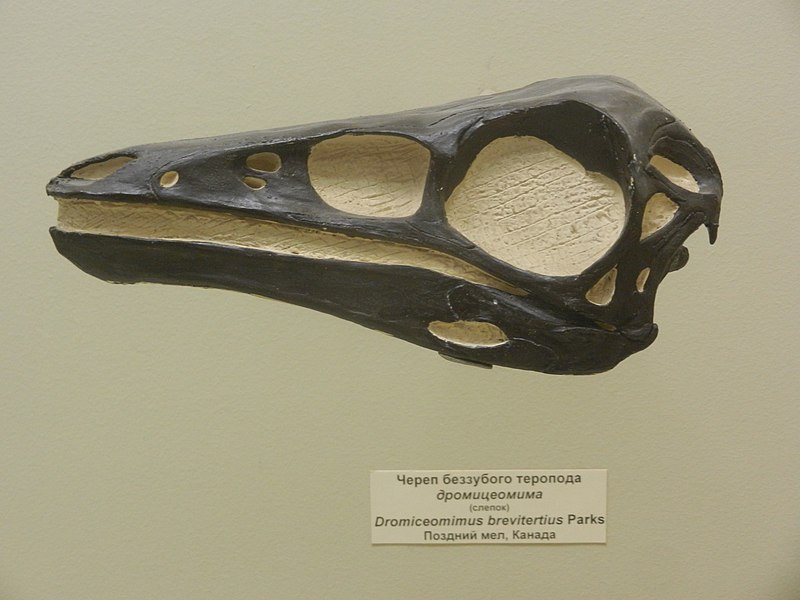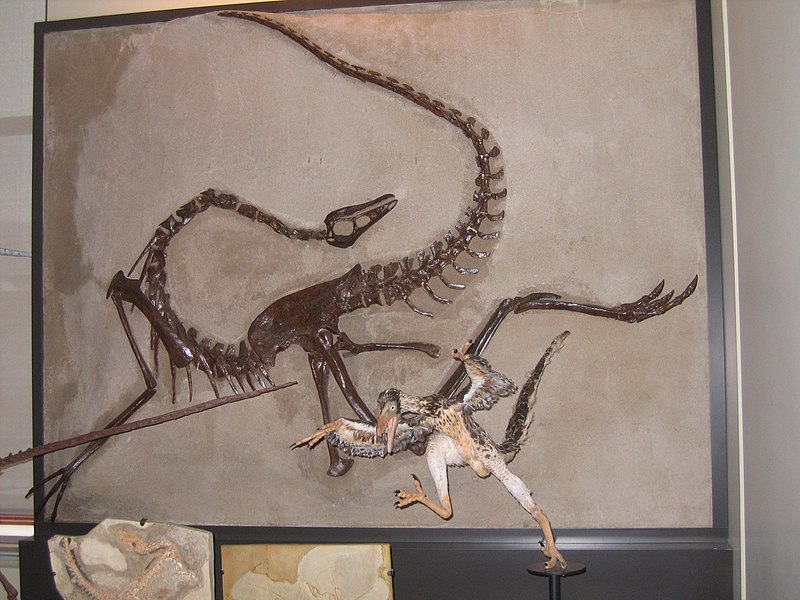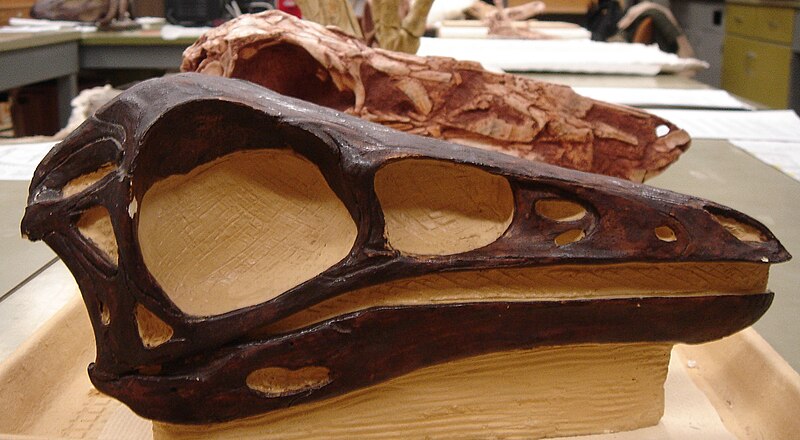Imagine a time when the earth was ruled by creatures as fantastical as any myth. This world could be found in the Late Cretaceous, when a being named Dromiceiomimus—meaning ‘Emu Mimic’—graced the ancient floodplains of what we now call Alberta, Canada. This nimble dinosaur was like the modern-day Emu in its swift movements and slender build. With its graceful yet robust build, this fascinating creature offers a vivid snapshot into a world both alien and intriguing.
Dromiceiomimus sparks our imagination and compels us to ponder the lives of these long-gone creatures of prehistory. And we are not the only ones–paleontologists still ponder this species to this day. As we unravel the tales locked within fossils, the ‘Emu Mimic’ stands as a symbol of prehistoric elegance and agility. This creature once darted through the shadows of towering conifers and broad-leaved trees, leaving only the whisper of its footsteps on the soft earth beneath.
Dromiceiomimus Key Facts
| Keyword | Fact |
|---|---|
| Pronunciation | dro-MI-see-oh-me-muss |
| Meaning of name | Emu Mimic |
| Group | Theropod |
| Type Species | Dromiceiomimus brevitertius (syn. to Dromiceiomimus samueli) |
| Diet | Omnivore |
| When it Lived | 70.6 to 66.0 MYA |
| Period | Late Cretaceous |
| Epoch | Early/Lower Maastrichtian |
| Length | 11.5 feet |
| Height | Approximately 6.0 feet at hip |
| Weight | 298.0 pounds |
| Mobility | Moved on two legs |
| First Discovery | 1924 by Gus Lindblad |
| Described by | 1926 by William Parks |
| Holotype | ROM 797 |
| Location of first find | Alberta, Canada |
Dromiceiomimus Origins, Taxonomy and Timeline
This complex name is derived from the generic name for the Emu, “Dromaius” or “Dromiceius“. This was combined with “mimus,” meaning mimic in Greek, to beautifully encapsulate its resemblance to the modern-day emu in both form and, perhaps, function.
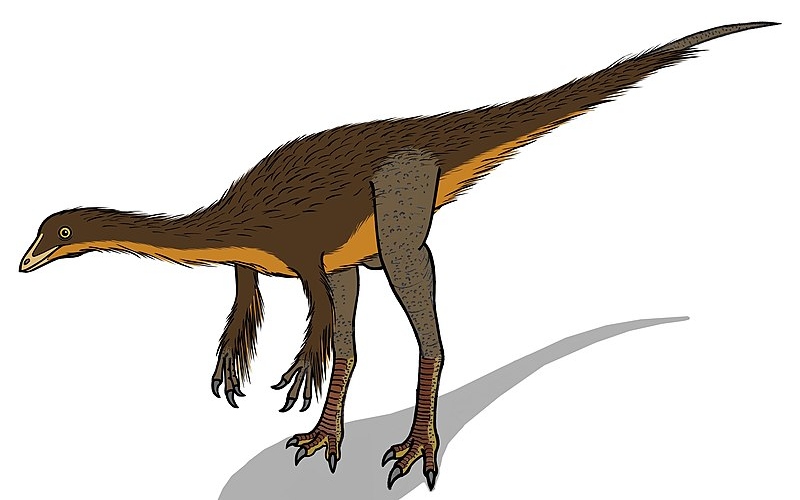
Dromiceiomimus occupies a unique position in dinosaur taxonomy. As a member of the Theropod group, it’s part of a lineage that includes some of the most formidable predators to have ever walked the Earth. Yet, within its immediate family–the Ornithomimids–it shares a closer kinship with species known for their bird-like qualities. These include a beak and feathered body, more so than its more ferocious cousins. The type species, Dromiceiomimus brevitertius, may be a distinct taxon or a synonym of Ornithomimus edmontonicus. This debate continues to spark spirited discussions among paleontologists.
The timeline of Dromiceiomimus is situated during the Late Cretaceous Period, specifically the Early/Lower Maastrichtian Epoch, marking a presence from approximately 70.6 to 66.0 million years ago. This era was a time of immense change and diversification in dinosaur evolution, with Dromiceiomimus navigating a world filled with giants.
Discovery & Fossil Evidence
The first discovery of Dromiceiomimus fossils in 1924 by Gus Lindblad in the Horseshoe Canyon Formation marked the beginning of our understanding of this fascinating creature. This excavation into Late Cretaceous deposits was led by the Royal Ontario Museum. Later described by William Parks in 1926, the holotype ROM 797 is a partial skeleton that has played a pivotal role in piecing together the dinosaur’s history.
Subsequent finds, particularly in the Cretaceous deposits of Alberta, have enriched our knowledge. The exact number of finds remains a topic of ongoing research due to taxonomic confusion. The fossils, mostly consisting of partial skeletons and scattered bones, offer insights into the physical structure of Dromiceiomimus. The fossil evidence is often complete but has been crucial in reconstructing the appearance and habits of Dromiceiomimus. The preservation of these fossils varies, with some specimens providing more detailed information than others.
- Dromiceiomimus brevitertius
- romiceiomimus skeleton and Sinotnithosaurus model. Photo taken at Canadian Museum of Nature Fossil Gallery on Mar. 15, 2008
- Skull of Dromiceiomimus
Dromiceiomimus Size and Description
In the realm of dinosaurs, this Theropod presents itself as a fascinating study. This petite dinosaur was known for its nimbleness and agility and carried characteristics that set it apart from its contemporaries.
Short Description of Dromiceiomimus
As a smaller member of the Ornithomimid family, this dinosaur displayed a unique blend of physical traits. Its slender body, elongated neck, and tail were complemented by relatively short arms when compared to its legs. The dino likely moved primarily on two legs, its long legs hinting at a capability for speed.
Size and Weight of Type Species
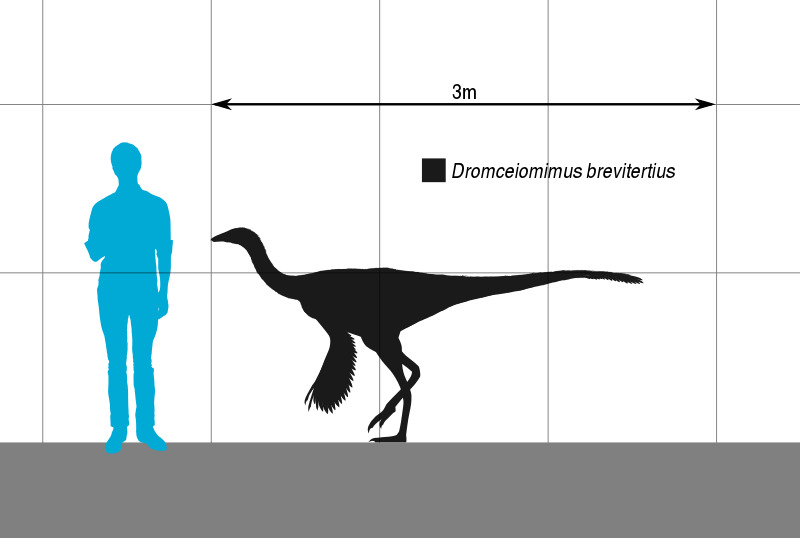
When it comes to size, Dromiceiomimus was modest compared to some of its massive cousins. Calculations based on its skeletal structure suggest that it was about 11.5 feet in total length. Standing tall, the height of this dino was derived from the length of its leg bones as approximately 6.0 feet at the hip. Such dimensions underscore its role as a nimble and agile predator or scavenger in its ecosystem. Weighing in at around 298.0 pounds, Dromiceiomimus was a lightweight contender in the Late Cretaceous world. This relatively low body weight, combined with its structural adaptations, suggests a lifestyle that involved quick movements, possibly chasing down smaller prey or scavenging for food.
The Dinosaur in Detail
Dromiceiomimus stands out in the dinosaur kingdom for a number of reasons, not least of which are its impressively long legs. This feature has led some researchers to speculate that it might have been one of the fastest runners of its time. Imagine a creature capable of speeds up to 45 or 50 miles per hour, a necessary adaptation whether it was fleeing from predators or chasing down its next meal. The length of its vertebral column in front of the hips was shorter than the combined lengths of its femur, tibia-astragalus, and third metatarsal, indicating a streamlined build optimized for swift movement.
Aside from its notable speed, it also possessed relatively large eyes and a correspondingly large brain, suggesting keen senses and perhaps a higher level of intelligence than some of its contemporaries. Its toothless, beak-like jaws may hint at a diet that included insects, vegetation, and the occasional small lizard or mammal. This versatility in feeding habits underscores the dinosaur’s ability to thrive in diverse environments and conditions.
The debate surrounding the classification of this dinosaur is as intriguing as the dinosaur itself. The distinction between Dromiceiomimus and its close relative, Ornithomimus, has been a point of contention, primarily due to the leg length being the main differentiating feature. Some scientists believe that limb proportions are not a valid reason to separate different species. This ongoing debate highlights not only the challenges of classifying ancient species but also the dynamic nature of paleontological research, where new findings can prompt reexaminations of long-held beliefs.
Interesting Points about Dromiceiomimus
- Its name reflects its emu-like appearance, something it shares with its closest relatives.
- It was part of a group of Theropods known for bird-like characteristics, linking modern birds to their prehistoric ancestors.
- This dinosaur’s varied diet and efficient body plan suggests significant adaptability to changing environments at the end of the Age of Dinosaurs.
- Dromiceiomimus is an excellent example of which traits are significantly different enough to form new species. Limb proportions may vary between individuals, meaning it may be more closely related to Ornithomimus than we think.
Dromiceiomimus in its Natural Habitat
The Ornithomimid family is often referred to as “Ostrich dinosaurs”. They thrived in a habitat that was as diverse as their own features. During the Late Cretaceous Period, Dromiceiomimus roamed vast alluvial plains in what is now known as Alberta and Saskatchewan. These plains, were part of a dynamic ecosystem that was characterized by layers of both continental and marine strata. The environment was diverse, from lush lowlands to coastal areas. The climate was warmer than today and supported a rich array of vegetation.
Its powerful hind limbs and long neck suggest a swift and mobile way of life, much like modern flightless birds. This dinosaur was adept at running, both for hunting prey and evading predators. Like other Ornithomimids, it was likely a gregarious animal–meaning it lived in groups. As for its diet, Dromiceiomimus was an omnivore. Its diet could have included small animals, insects, and plant matter. This dietary diversity was key to its survival in the ever-changing Late Cretaceous landscape.
Contemporary Dinosaurs
In the shadow of the ancient giants, a lithe figure amidst formidable contemporaries roamed amongst North American dinosaurs. It made its home on Laramidia, a paleocontinent that makes up western North America today. This landscape was a theater of prehistoric dynamism, where interactions were as complex as they were intriguing.
In this world of giants and hunters, Albertosaurus loomed large. Larger than Dromiceiomimus, it was a fearsome predator that stalked the same lands. Their encounters would have been a dramatic display of agility versus sheer power. While the smaller, nimble Dromiceiomimus likely relied on speed and cunning to evade these towering carnivores, the formidable size and strength of Albertosaurus would have been a constant reminder of the perilous balance of the Cretaceous ecosystem.
Parasaurolophus trumpeted its presence amid this chorus of ancient calls. These majestic herbivores were adorned with their distinctive crested heads. They possibly shared grazing grounds with Dromiceiomimus. Their coexistence paints a picture of a diverse habitat, where the balance of grazer and browser maintained ecological equilibrium. The elegant Corythosaurus, another crested herbivore, shared this Cretaceous stage. With its graceful neck and distinctive crest, it perhaps moved in herds through the same territories frequented by Dromiceiomimus.
Pachyrhinosaurus presents a contrast to the lithe form of Dromiceiomimus due to its bulky frame and distinctive nasal boss. Though both herbivores, their vastly different sizes and feeding habits suggest an easy coexistence. The smaller Dromiceiomimus might have skirted around the edges of Pachyrhinosaurus herds, perhaps scavenging leftovers or foraging for smaller plants overlooked by its larger contemporaries.
Frequently Asked Questions
It was an omnivore, feeding on a variety of plants, insects, and possibly small animals.
This dinosaur was bipedal, walking on two legs. Their length suggest that it was agile and quick.
The first fossils were discovered in Horseshoe Canyon Formation, in Alberta, Canada. Subsequent finds came from the same region.
Dromiceiomimus lived during the Late Cretaceous Period, from 70.6 to 66.0 million years ago.
Dromiceiomimus, part of the Ornithomimid family, shows physical traits linking it to modern birds.
Sources
The information in this article is based on various sources, drawing on scientific research, fossil evidence, and expert analysis. The aim is to provide a comprehensive and accurate overview of Dromiceiomimus. However, please be aware that our understanding of dinosaurs and their world is constantly evolving as new discoveries are made.
- https://www.ncbi.nlm.nih.gov/pmc/articles/PMC9581415/
- https://cdnsciencepub.com/doi/10.1139/e72-031
- https://www.researchgate.net/publication/328399551_Description_of_a_partial_Dromiceiomimus_Dinosauria_Theropoda_skeleton_with_comments_on_the_validity_of_the_genus
- https://ostrnrcan-dostrncan.canada.ca/entities/publication/03ccfaf9-009f-48dd-9783-63ebfa693592
Article last fact checked: Joey Arboleda, 03-14-2024
Featured Image Credit: Conty, CC BY 3.0, via Wikimedia Commons

